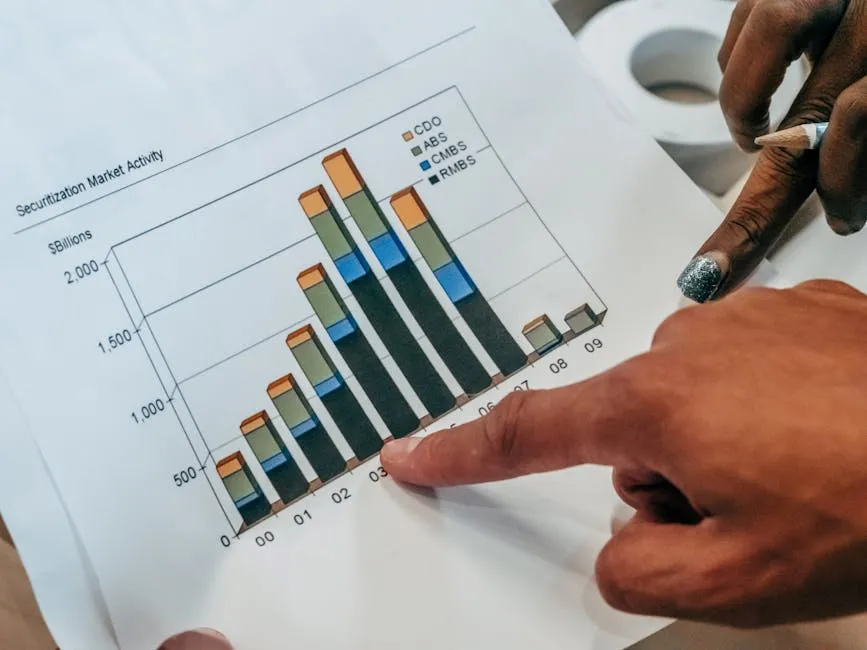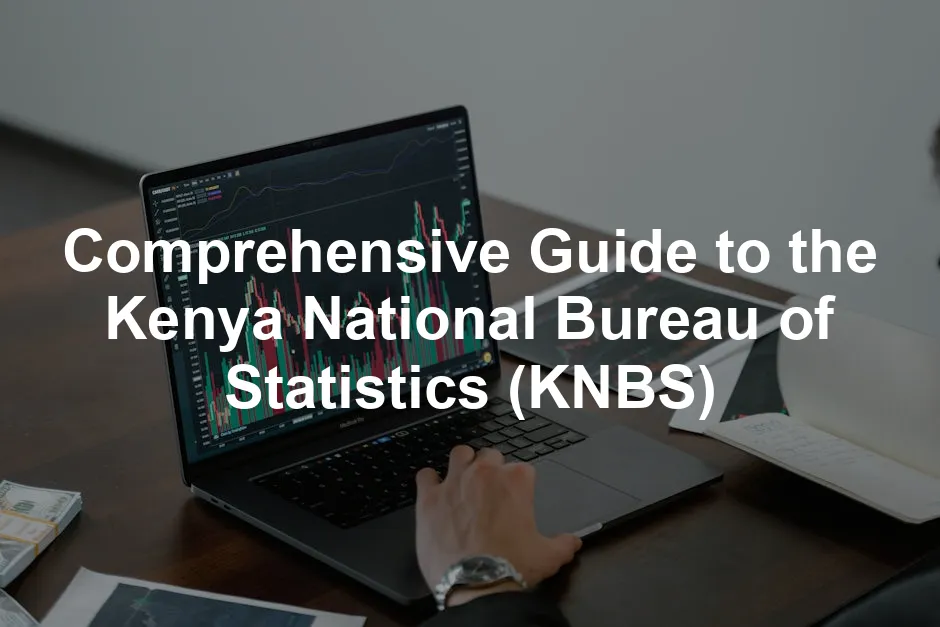Introduction
The Kenya National Bureau of Statistics (KNBS) is the backbone of data collection and analysis in Kenya. Established under the Statistics Act of 2006, KNBS plays a vital role in gathering, managing, and disseminating statistical information about the country’s economy and society. This institution ensures that policymakers have access to accurate data, which is essential for making informed decisions.
Why are statistics so crucial? Well, they guide governments in crafting policies that affect everything from healthcare to education and infrastructure. Accurate statistics help identify trends, measure progress, and allocate resources effectively. In other words, without a reliable source of information, policymakers might as well be throwing darts in the dark!
Speaking of navigating data, if you’re looking to sharpen your analytical skills, consider picking up Excel for Dummies. This book is a fantastic resource for anyone looking to master Excel, which is a must-have tool for data analysis!
In this article, we will take a closer look at the workings of KNBS, from its establishment to its organizational structure. We will also discuss its key functions and the importance of statistics in shaping Kenya’s socio-economic landscape. So, grab your favorite beverage and settle in as we uncover the numbers, facts, and figures that make Kenya tick!

Understanding the KNBS
Overview of KNBS
The Kenya National Bureau of Statistics made its debut in 2007, thanks to the Statistics Act of 2006. This agency exists to provide quality statistics that help in economic and social planning. Think of it as a data detective, tirelessly gathering information to paint a clear picture of the nation’s progress.
Located in the heart of Nairobi—specifically at Herufi House—KNBS is staffed by skilled professionals who are dedicated to collecting and analyzing data. Their mission? To ensure that every statistic is reliable and reflects the true state of affairs in Kenya. And with a population of over 52 million, that’s no small task!
If you’re interested in diving deeper into statistical methods, you might want to check out The Art of Statistics: Learning from Data. It’s a brilliant guide that will help you understand the nuances of data interpretation.
Organizational Structure
KNBS operates through a well-defined organizational structure that enables efficient data collection and analysis. At the helm is the Director General, supported by various departments focusing on different aspects of statistics.
Key departments include:
- Economic Statistics Department: This team focuses on gathering data related to economic performance, such as GDP, inflation, and trade statistics. They help track the financial pulse of the nation.
- Social Statistics Department: Here, the focus shifts to demographic data, health, education, and social welfare statistics. They ensure that social policies are based on solid grounds.
- Geospatial and Data Science Department: This innovative department utilizes technology to enhance data collection and analysis. They incorporate geographic information systems (GIS) to provide spatial insights.
- Methodology and Data Quality Department: The watchdogs of data integrity! This department ensures that all collected statistics meet international standards of quality.
By working together, these departments ensure that KNBS meets its objectives of providing accurate, timely, and relevant statistics. With a robust structure in place, KNBS continues to be a central figure in Kenya’s data-driven decision-making landscape.

Key Functions of KNBS
Data Collection and Management
KNBS employs various methods for data collection, ensuring a comprehensive understanding of Kenya’s demographics and economy. Surveys and censuses dominate this landscape, providing critical insights into the population’s characteristics and economic activities.
Surveys are often conducted periodically. They target specific sectors or themes, like household income or employment statistics. For instance, the Labour Force Survey helps gather essential data on employment trends. These surveys are designed meticulously to capture accurate information, and they often involve sampling techniques to ensure a representative picture.
Censuses, on the other hand, are grand events that occur every ten years. The Kenya Population and Housing Census, the most significant of these, paints a detailed picture of the population’s size, distribution, and living conditions. The last census took place in 2019, revealing a population of over 47 million people. This extensive data collection effort is no small feat, requiring meticulous planning and execution.
If you want to ensure your data analysis is top-notch, consider using Statistical Analysis Software. It can help you analyze your data more efficiently and effectively.
The importance of data accuracy and reliability cannot be overstated. KNBS employs rigorous methodologies and quality control measures to ensure the statistics produced are trustworthy. After all, faulty data can lead to misguided policy decisions, and nobody wants to be the reason behind a poorly planned road or an underfunded school!

Statistical Programmes
At the heart of KNBS’s operations are its statistical programs, designed to generate comprehensive data for various sectors. A standout program is the Kenya Population and Housing Census. Conducted every ten years, this census is vital for demographic analysis and resource allocation. The next census is anticipated in 2029, and it will undoubtedly be another monumental task for the bureau.
The methodology for this census is quite detailed. It includes extensive planning, community engagement, and training of enumerators. The significance of the census lies in its ability to inform government policies and programs for years to come. For example, the findings help determine the allocation of funds for healthcare, education, and infrastructure development.
Another essential program is the National Sampling Survey and Evaluation Programme. This initiative focuses on household data collection and evaluation. By regularly assessing various socio-economic indicators, KNBS can track changes over time. This program plays a crucial role in monitoring progress towards national development goals.
Publications and Reports
KNBS produces a variety of publications and reports that serve as vital resources for researchers, policymakers, and the public. Among the most notable are the Economic Surveys and Statistical Abstracts. These documents provide a wealth of information on economic performance, demographic trends, and social indicators.
The Economic Survey, released annually, highlights key economic indicators such as GDP growth, inflation rates, and employment statistics. The most recent survey indicates a GDP growth rate of 4.6% for Q2 2024, which can influence investment decisions and policy formulation.

Speaking of investment decisions, if you’re looking for a great read on making sense of predictions, check out The Signal and the Noise: Why So Many Predictions Fail—but Some Don’t. It’s an insightful exploration of forecasting that can help you in both professional and personal contexts.
Statistical Abstracts compile comprehensive data across various sectors, making them indispensable for anyone looking to understand Kenya’s statistical landscape. These publications are not just numbers on a page; they tell a story of growth, challenges, and the journey towards development.
Recent reports have focused on topics like inflation rates and balance of payments. The inflation rate, which stood at 3.6% in September 2024, provides insights into the cost of living and economic stability. Such reports are crucial for consumers, businesses, and government agencies alike.
In conclusion, the functions of the KNBS are vast and multifaceted. Through diligent data collection, robust statistical programs, and informative publications, KNBS plays a pivotal role in shaping Kenya’s policies and understanding its socio-economic dynamics. Data is power, and KNBS is at the helm, ensuring that this power is harnessed effectively for the benefit of all Kenyans.

Key Statistics and Economic Indicators
Current Key Statistics
As of mid-2024, the Kenya National Bureau of Statistics (KNBS) provides crucial insights into the country’s demographic and economic landscape. The current population stands at approximately 52.43 million. This figure reflects a steady growth pattern, indicating Kenya’s vibrant and youthful demographic.
In terms of economic performance, the GDP growth rate is estimated at 4.6% for the second quarter of 2024, slightly down from 5.0% in the previous quarter. This decline might raise eyebrows, but it’s not unusual in the ever-fluctuating economic environment. Inflation rates, measured by the Consumer Price Index (CPI), are currently at 3.6% as of September 2024. This moderate inflation suggests that the cost of living remains relatively stable, at least for now.
However, the picture isn’t all rosy. The poverty rate, recorded at 38.6% in 2021, remains a significant concern. Despite improvements in various sectors, a substantial portion of the population still grapples with economic hardships. Monitoring these trends is essential. They help gauge the effectiveness of government policies aimed at poverty alleviation and economic growth.

Economic Overview
Let’s shift gears and talk trade. The trade statistics reveal a dip in activity, with the total trade volume dropping from KSh 333.8 billion in February 2024 to KSh 306.2 billion in March 2024. Exports took a hit, decreasing from KSh 107.4 billion to KSh 97.9 billion. Imports also followed suit, falling from KSh 226.4 billion to KSh 208.2 billion. This trend raises questions about the competitiveness of Kenyan goods in the global market.
On the public finance front, national government revenue is projected to increase by 14.9%, reaching KSh 2,562.1 billion for the fiscal year 2022/23. A notable 87.9% of this revenue comes from taxes, highlighting the government’s reliance on tax collection for funding. Such figures indicate a robust fiscal framework, but they also stress the importance of maintaining efficiency and transparency in public spending.

Sectoral Analysis
Agriculture
Agriculture remains a cornerstone of Kenya’s economy, but it’s facing challenges. Tea production has seen a decline, dropping from 58,966.9 metric tons in January 2024 to 55,447.3 metric tons in February 2024. This reduction can be attributed to various factors, including climate change and fluctuating market conditions.
On a brighter note, coffee exports have picked up, increasing from 2,745.2 metric tons to 4,291.3 metric tons between February and March 2024. This boost in exports, coupled with a rise in value from KSh 2.1 billion to KSh 3.3 billion, showcases the potential of Kenya’s coffee industry on the global stage.
Horticulture, however, paints a different picture. The volume of exported cut flowers plummeted from 12,841.9 metric tons in November 2023 to just 4,684.6 metric tons in December 2023. The value of these exports also fell significantly, from KSh 9.5 billion to KSh 3.2 billion. Such sharp declines in this sector can have widespread implications for livelihoods and rural economies.

Tourism
Now, let’s take a stroll down the tourism lane. This sector recently experienced a significant rebound, with international visitor arrivals soaring by 35.4%, jumping from 1.54 million in 2022 to over 2.08 million in 2023. This resurgence is a breath of fresh air for an industry that faced unprecedented challenges due to the pandemic.
Visitor numbers to national parks also surged, increasing by 43.0% to reach approximately 3.64 million in 2023. The hospitality sector is benefiting, too, with hotel bed occupancy rates climbing by 23.2%, from 7 million to over 8.6 million in the same period. Such growth in tourism not only boosts the economy but also supports countless jobs across the country.
In conclusion, while Kenya’s statistics paint a mixed picture, they highlight the resilience and potential within various sectors. Continuous monitoring and adaptive strategies will be key to navigating the challenges ahead. With accurate data from KNBS, policymakers can make informed decisions to steer the nation toward a more prosperous future.

Recent Developments and Initiatives
Recent Publications
The Kenya National Bureau of Statistics (KNBS) has been busy lately, unveiling a series of statistical releases that shine a light on the nation’s economic and social landscape. Just a week ago, they dropped the latest Quarterly Gross Domestic Product report for Q2 2024. The numbers revealed a modest GDP growth of 4.6%, slightly below the previous quarter’s 5.0%. While it might not sound like a rollercoaster ride, these figures are crucial for policymakers. They provide insights into economic performance and guide strategic planning for future growth.
But wait, there’s more! The recent Balance of Payments report also made headlines, showcasing a current account balance of KSh -104.1 billion. This information is pivotal as it helps illustrate the country’s trade dynamics and financial health. It’s like reading the economic pulse of the nation, helping stakeholders understand whether we’re thriving or just barely surviving.
KNBS has also focused on inflation rates, which currently sit at a stable 3.6% as of September 2024. This is good news for consumers, as stable prices contribute to a sense of financial security. However, the Producer Price Index (PPI) tells a different story, showing a decline of -1.79% in Q2 2024. These contrasting indicators can prompt significant discussions among policymakers about the underlying causes of such trends and how to address them.
If you’re looking to enhance your data visualization skills, consider picking up Data Visualization Tools. They can help you create stunning graphics that make your data pop!

In a nutshell, these publications are not just numbers. They are essential tools that inform decisions affecting everything from budget allocations to social programs. For the public, they serve as a window into the country’s economic health, fostering transparency and accountability.
Community Engagement
The KNBS isn’t just about crunching numbers; they also prioritize community engagement. Recently, they hosted a series of workshops aimed at involving the public and stakeholders in the statistical process. These sessions provided a platform for citizens to voice their concerns and expectations regarding data collection and usage. It’s like a democratic town hall, but with fewer debates and more pie charts!
Public consultations have also become a staple of KNBS’s outreach efforts. These gatherings encourage dialogue between the bureau and communities, ensuring that the data collected reflects the needs and realities of the populace. Engaging with citizens fosters trust and ensures that the statistics produced are relevant and useful.
Additionally, the recent School Census is a prime example of KNBS’s commitment to inclusive engagement. The closing ceremony, held just days ago, marked the completion of a 67-day data collection exercise encompassing various educational institutions. This initiative aims to fill the significant data gap in Kenya’s basic education sector, ultimately guiding evidence-based policy decisions. By including various stakeholders, KNBS enhances the relevance of its data, making it a collaborative effort rather than a top-down approach.

Opportunities at KNBS
If you’re looking to jumpstart your career in statistics, the KNBS is where the action is! The bureau regularly posts job openings, inviting talented individuals to join its ranks. Whether you’re a seasoned statistician or a fresh graduate, there are opportunities to contribute to Kenya’s data-driven decision-making process.
Moreover, KNBS is open to collaborations with other institutions. This includes partnerships for research projects, internships, and various data-driven initiatives. The recent memorandum of understanding signed with Jomo Kenyatta University of Agriculture and Technology serves as a testament to KNBS’s commitment to fostering academic collaboration. This partnership aims to enhance statistical training and data analysis capabilities, creating a well-rounded workforce for the future.
Additionally, KNBS encourages tenders for various projects, offering companies and organizations a chance to contribute to statistical initiatives. This approach not only broadens the bureau’s capacity but also stimulates local economies through job creation and skills development.
In summary, KNBS is not just about statistics; it’s a vibrant hub of opportunity, community involvement, and continuous improvement. By actively engaging with the public and creating avenues for collaboration, KNBS ensures that its impact reaches far beyond the numbers.

Challenges and Future Directions
Challenges Faced by KNBS
The Kenya National Bureau of Statistics (KNBS) is not without its hurdles. One significant challenge is data integrity. In an age where misinformation spreads faster than you can say “statistic,” ensuring the accuracy of data is paramount. KNBS often grapples with discrepancies in reported data, which can arise from various sources, including local government units and private entities. This issue can lead to inconsistencies, making it difficult for policymakers to trust the statistics they rely on.
Funding is another persistent challenge. Despite its critical role, KNBS often operates with limited resources. Budget constraints can hinder the bureau’s ability to conduct comprehensive surveys or invest in modern technology for data collection and analysis. This situation can result in outdated methodologies and less reliable data, which is far from ideal when it comes to shaping policy.
Public perception also plays a crucial role in the effectiveness of KNBS. Many Kenyans view the bureau’s data with skepticism. This skepticism can stem from past experiences, such as the controversies surrounding the 2019 Population and Housing Census, where significant budget discrepancies were reported. Trust is earned, and rebuilding it requires transparency and consistent communication from KNBS.

Future Initiatives
Looking ahead, KNBS is poised for exciting developments, especially in statistical methods and technology. With the rapid advancement of technology, KNBS is exploring innovative ways to enhance data collection. For instance, incorporating mobile technology for surveys can improve response rates and efficiency. Imagine enumerators equipped with tablets, collecting data on the go. It’s like turning a physical marathon into a sprint!
In terms of statistical methods, there is an increasing trend towards data integration. By combining various data sources, KNBS could produce richer insights. For example, merging census data with mobile phone usage statistics could reveal demographic trends that were previously obscured. This approach not only increases the depth of analysis but also provides a more comprehensive view of Kenya’s socio-economic landscape.
Furthermore, KNBS recognizes the need for improvement in data dissemination. Future initiatives may include user-friendly platforms where citizens can access relevant statistics easily. Providing data in engaging formats, such as infographics or interactive dashboards, could attract more users and foster a culture of data-driven decision-making among the public.
Additionally, public engagement will be crucial for KNBS. Strengthening ties with communities can help build trust and encourage collaboration. Hosting workshops and outreach programs will ensure that the statistics gathered reflect the diverse realities of Kenyan society. After all, data is most powerful when it represents the voices of the people it affects!

FAQs
What is the role of the KNBS?
The Kenya National Bureau of Statistics is responsible for collecting, analyzing, and disseminating statistical data on Kenya’s society and economy. It provides essential information for policymaking and planning.
How often does the Kenya Population and Housing Census occur?
The Kenya Population and Housing Census takes place every ten years. The most recent census was conducted in 2019, with the next scheduled for 2029.
Where can I find the latest publications from KNBS?
You can find the latest publications and reports on the official KNBS website at [knbs.or.ke](https://www.knbs.or.ke/). This site provides access to a wealth of statistical information.
How can I contribute to or collaborate with KNBS?
KNBS welcomes public engagement and collaboration. Opportunities include internships, partnerships for research projects, and participation in public consultations. Keep an eye on their announcements for specific opportunities.
What are the benefits of using KNBS data?
KNBS data is invaluable for researchers, policymakers, and businesses. It aids in planning, policy formulation, and understanding socio-economic trends, making it a critical resource for informed decision-making.
As you dive into the world of data, you might also find it useful to invest in a Kindle Paperwhite. It’s perfect for reading those data-heavy books without straining your eyes!
Please let us know what you think about our content by leaving a comment down below!
Thank you for reading till here 🙂
For more detailed information about the Kenya National Bureau of Statistics, check out this comprehensive guide.
To understand the impact of diversity through data, explore this article on social statistics.
For insights on statistical distribution relevant for agriculture, refer to this guide.
All images from Pexels




